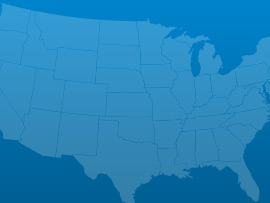MOST DRINKING WATER SYSTEMS IN NEW JERSEY ARE SMALL; 55% HAVE A CAPACITY OF LESS THAN 1M GALLONS PER DAY. New Jersey’s water supply systems were constructed largely during a peak growth period (1890 to 1930) and to provide clean water statewide (1950-1970), but the ability of these systems to provide adequate services is threatened by age, lack of reinvestment, and a short-term focus. Due to the concentration of times when much of the water infrastructure was placed in service, New Jersey will need to overhaul a lot of its existing drinking water infrastructure in the next two to three decades. New Jersey drinking water systems are split between investor-owned utilities, which serve roughly 40% of all
customers, as well as municipal utilities and utility authorities. There is no comprehensive system or report for understanding New Jersey’s current status and drinking water utility plans to
address their infrastructure needs. With the age of the supply systems today, a comprehensive review would help to plan future investments and prioritize critical projects.
 Bridges
Bridges Dams
Dams Drinking Water
Drinking Water Energy
Energy Hazardous Waste
Hazardous Waste Levees
Levees Rail
Rail Roads
Roads Solid Waste
Solid Waste Transit
Transit Wastewater
WastewaterA: Exceptional, B: Good, C: Mediocre, D: Poor, F: Failing, ?: Incomplete
Each category was evaluated on the basis of capacity, condition, funding, future need, operation and maintenance, public safety, resilience, and innovation
Aviation
24 public-use airports
Bridges
624 of the 6,566 bridges are structurally deficient
Bridges
$172.20 million in bridge funds came from the Federal Highway Bridge Fund in 2011
Dams
100% of the state regulated dams have an Emergency Action Plan
Dams
218 high hazard dams
Drinking Water
$7.9 billion in drinking water infrastructure needs over the next 20 years
Energy
0.868 gigawatt-hours of renewable energy every year, ranking it 46th
Hazardous Waste
111 sites on the National Priorities List
Inland Waterways
360 miles of inland waterways, ranking it 23rd nationally
Levees
126 miles of levees
Ports
152.7 million short tons of cargo in 2012, ranking it 4th nationally
Public Parks
$323.0 million of unmet needs for its parks system
Rail
18 freight railroads covering 983 miles across the state, ranking 40th nationally by mileage
Roads
6,822 of the state’s 39,272 public roads are major roads, and 35% are in poor condition
Roads
$3.6 billion a year in costs to motorists from driving on roads in need of repair, which is $605 /yr per motorist
Schools
$1.0 billion in estimated school infrastructure funding needs
Transit
407 million annual unlinked passenger trips via transit systems including bus, transit, and commuter trains
Wastewater
$32.5 billion in wastewater infrastructure needs over the next 20 years

March 03, 2017
As the President’s repeated in his address to Congress his pledge to dramatically increase infrastructure spending to the tune of $1 trillion, various Congressional Committees

March 01, 2017
On Tuesday night, President Trump addressed a joint-session of Congress for the first time in his presidency. Infrastructure was among the many issues he discussed.

February 28, 2017
U.S. motorists set a new record for vehicle miles travelled (VMT) in 2016, driving over 3.2 trillion miles, an increase of 70 billion miles from

February 17, 2017
Romantic dates, the Grammy awards and celebrating black history are not the only milestones of this week; the Oroville dam crisis in California and the